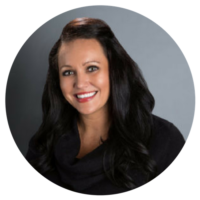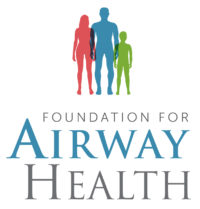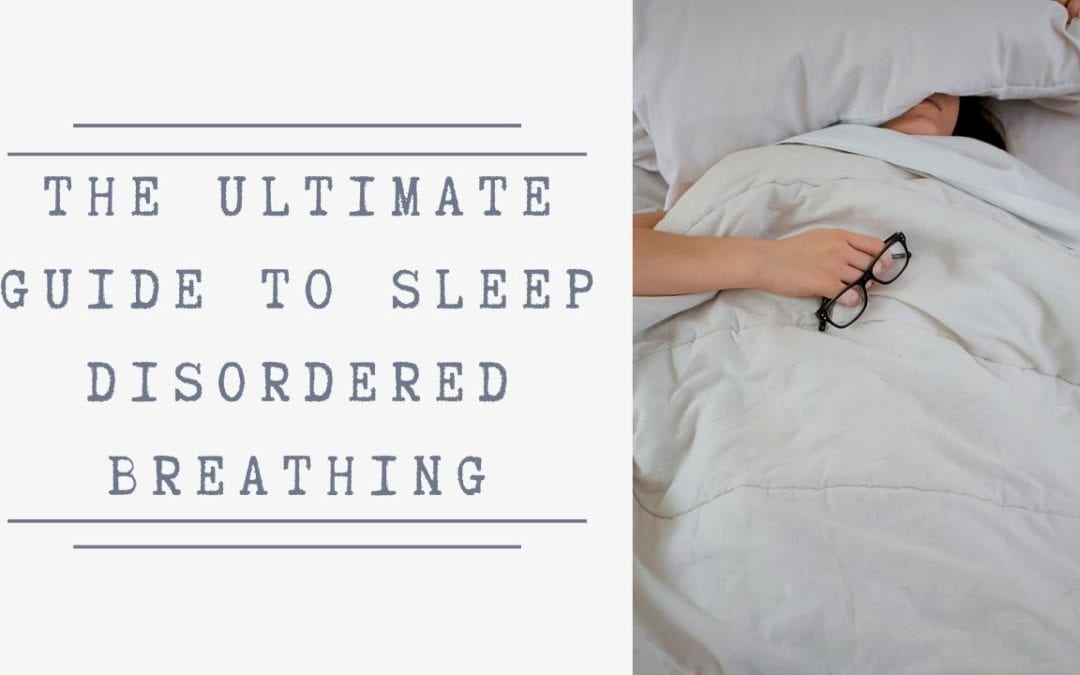The Ultimate Guide To Sleep-Disordered Breathing
Sleep-disordered breathing is on the rise. Many people have sleep-disordered breathing and are unaware of the long term consequences of ignoring it. In this blog, we break down some of the information regarding sleep-disordered breathing and help you understand why it is so paramount to your health that you take sleep-disordered breathing seriously.
What is sleep-disordered breathing?
Sleep-disordered breathing is a catch-all term used to describe a number of different chronic conditions in which partial or complete cessation of breathing occurs many times throughout the night, resulting in generalized fatigue, poor motivation, and lack of energy which decreases the quality of life for many people.
Sleep-disordered breathing includes:
Open-mouth breathing
Oral breathing, a learned habit, is a result of incorrect oral rest posture. When the tongue is not correctly resting against the roof of the mouth, with the mouth closed and lips sealed, the airway cannot be supported. Oral breathing can be the cause of chronic congestion, upper respiratory infections, dental and periodontal complications, forward head posture, and craniofacial development anomalies, as well as a risk factor for snoring, upper airway resistance syndrome and obstructive sleep apnea. Another important thing to consider is the possibility of a tongue-tie. When a person doesn’t have the correct oral rest posture, its important to determine why. Is it because the muscles are so weak, or is it because there is a physical reason, like a tongue-tie.
Snoring
Normal breathing is quiet and through the nose. It is effortless and allows the body to get the deep restorative and reparative sleep needed to wake refreshed and motivated to embrace the day with joy and enthusiasm.
Snoring, a potentially serious form of obstructed breathing can be caused by a number of different factors such as oral anatomy, alcohol consumption, weight, and chronic congestion. Snoring is the loud, annoying sound that occurs when air flows past the relaxed tissues in the throat and causes those tissues to vibrate.
Upper Airway Resistance Syndrome (UARS)
This syndrome is similar to obstructive sleep apnea in that the size of the airway is decreased by relaxation of the oral tissues, resulting in sleep arousals and daytime drowsiness. This syndrome is different from obstructive sleep apnea because the apneas and hypopneas (detailed below) are either very low or absent in patients with UARS. The symptoms of UARS tend to be similar to those of obstructive sleep apnea, but less severe.
Sleep Apnea
Sleep apnea is a common and serious sleep disorder that causes cessation of breathing during sleep. Sleep apnea can make people wake up in the morning feeling unrefreshed and still tired, even after a full night of sleep. During the day, many sufferers experience a lack of concentration, daytime drowsiness, low energy levels, and lack of motivation.
The main types of sleep apnea are:
Obstructive sleep apnea (OSA)
In this, most common form, the airway repeatedly becomes blocked (by the collapse of the throat muscles, or by the tongue taking up space in the throat area), limiting the amount of air that reaches the lungs. When this happens, a person may make gasping sounds or snore. The brain, being alerted to oxygen deprivation, arouses the body. This may happen a few times a night, or in severe cases, much more than that, and it is usually not remembered consciously by the person.
There are two major events that characterize obstructive sleep apnea:
- Hypopneas: Defined by abnormally shallow or slow breathing; In sleep hypopnea, the airway is only partially obstructed
- Apneas: Defined by temporary cessation of breathing; In sleep apnea, the airway becomes fully obstructed
Central sleep apnea
This less common form of sleep apnea occurs when your brain doesn’t send proper signals to the muscles that control breathing
Complex sleep apnea syndrome
This form occurs when someone has both obstructive sleep apnea and central sleep apnea
What are the warning signs of sleep apnea?
The most common symptom of sleep apnea is snoring. However, much to contrary belief, a person does not have to snore to be diagnosed with sleep apnea.
Common symptoms of sleep apnea include:
- Loud or frequent snoring
- Silent pauses in breathing
- Choking or gasping sounds
- Daytime sleepiness or fatigue
- Unrefreshing sleep
- Insomnia
- AM headaches
- Nocturia (frequent nighttime potty breaks)
- Difficulty concentrating
- Memory loss
- Decreased sexual desire
- Irritability
- Grinding
- Sleep terrors
- Sleep talking
- Restless sleep or weird positions (head back, inverted “C shape”)
- Bedwetting
What are the risk factors for sleep apnea?
Sleep apnea does not discriminate. It affects all ages.
Risk Factors for Obstructive sleep apnea:
- Excess weight. Obesity greatly increases the risk of sleep apnea.
- Neck circumference. 17”+ for males, 16”+ for females
- Anatomy. You might have inherited a narrow throat. Tonsils or adenoids also can enlarge and block the airway, particularly in children.
- Sex. Men are 2-3 times more likely to have sleep apnea than are women. However, the risk for women increases with being overweight and after menopause.
- Age. Sleep apnea occurs significantly more often in older adults.
- Family history. Family members with sleep apnea might increase your risk.
- Use of alcohol, sedatives, or tranquilizers. These substances relax the muscles in your throat, which can worsen obstructive sleep apnea.
- Smoking. Smokers are three times more likely to have obstructive sleep apnea than are people who’ve never smoked, due to increased inflammation and fluid retention in the upper airway.
- Nasal congestion. If you have difficulty breathing through your nose — whether from an anatomical problem, allergies, or oral breathing — you’re more likely to develop obstructive sleep apnea.
Risk Factors for Central sleep apnea:
- Age. Older people have a higher risk of central sleep apnea.
- Sex. More common in males than females
- Heart disorders. Having a heart problem increases the risk.
- Using narcotic pain medications. Strong, long-acting pain medications increase the risk of central sleep apnea.
- Stroke. Having had a stroke increases your risk of central sleep apnea or complex sleep apnea syndrome
What about sleep apnea in children?
Alarmingly, the numbers of children with sleep apnea are on the rise. Unlike an adult, there are no universally accepted guidelines as to when a child’s sleep apnea is severe enough to warrant treatment. Since children rarely experience sleep apnea events, most sleep specialists consider one sleep disturbance per hour as abnormal. Let’s face it. Children are growing and developing. Not only do they need quality sleep, but they also need continuous oxygen to the brain. Many children who are diagnosed with ADD/ADHD have sleep apnea. It’s possible that the behavioral issues associated with ADD/ADHD might simply be a child who isn’t sleeping well. As cute as we like to think it is when our young ones snore, it could be harmful. Ruling out sleep apnea is most important. After that, evaluation for myofunctional dysfunction is important.
What happens with untreated sleep apnea?
The body and brain need oxygen. When there is a lack of oxygen, negative long-term consequences can be profound. Sleep apnea is a serious medical condition and left untreated can have serious, fatal consequences. Complications can include:
-
- Stroke
- Heart disease
- High blood pressure
- Pre-diabetes and type 2 diabetes.
- Metabolic syndrome
- Depression and anxiety
- Liver problems
- Complications with medications and surgery
- Sleep-deprived partners.
- Hyperactivity and behavioral issues
- Cognitive problems
- Growth issues
Who diagnoses sleep apnea?
A sleep medicine physician can diagnose sleep apnea with a sleep study, called a polysomnogram. This evaluation monitors the heart, brain and lung activity, blood oxygen saturation levels, and limb movements. A polysomnogram will help the doctor diagnose central sleep apnea, obstructive sleep apnea, narcolepsy, and many other different types of sleep disorders.
Some doctors will start with a home-sleep screening test as well. It is a great screening tool and is much more affordable for the first step, but there are limitations. A home sleep test does not measure brain waves, sleep time, and leg movements, and can underestimate the severity of sleep apnea when compared to a lab-based sleep study.
Apnea-Hypopnea Index (AHI)
A doctor will use the Apnea-Hypopnea Index (AHI) and the oxygen saturation level to indicate the severity of sleep apnea. An AHI is the number of apneas or hypopneas recorded per hour of sleep, during the study. It is expressed as the number of events per hour.
Based on the AHI, the severity of sleep apnea can be classified:
- None / Normal: AHI is less than 5 per hour
- Mild: AHI is more than 5, but less than 15 per hour
- Moderate: AHI is more than or equal to 15, but less than 30 per hour
- Severe: AHI is more than or equal to 30 per hour
Oxygen Saturation
When oxygen levels drop (desaturation) it is recorded on the polysomnogram. A person (at sea level) should have an oxygen saturation level of 96-97%. Sleep studies monitor and record drops in oxygen saturation and this provides information for diagnosis.
Respiratory Disturbance Index (RDI)
The RDI can be confusing because it includes apneas, hypopneas, and respiratory event-related arousals (RERA’s). The RDI is defined as the average number of respiratory disturbances per hour. The confusion arises because there is no universal consensus on whether an AHI or an RDI should be the benchmark standard. Insurance carriers such as Medicare create more confusion because the preferred/required index can vary by region.
The take-home message here is to make sure to complete due diligence. Sleep apnea might be overlooked if the AHI is used rather than the RDI. Talking to an experienced sleep physician about the diagnostic criteria for obstructive sleep apnea will help clear up any confusion.
There are also resources available from the American Academy of Sleep Medicine.
How is sleep apnea managed?
- CPAP (Continuous Positive Airway Pressure): The gold standard of care, is a device that gently blows air into the airway to keep it open during sleep. A BiPAP (also known as a VPAP, variable positive airway pressure) machine is similar to a CPAP, but the airflow changes with inhalation and exhalation.
- Oral appliance therapy: The appliances reposition the lower jaw by bringing it forward, as well as the tongue, to remove obstructions
- Surgery
- Tonsillectomy
- Adenoidectomy
- Nasal
- Uvulopalatopharyngoplasty (UPPP)
- Maxillomandibular advancement (MMA)
- Somnoplasty
- Hypoglossal Nerve Stimulation
- Lifestyle changes
- Lose weight
- Avoid alcohol, narcotic pain pills, sedatives and tranquilizers
- Change sleep positions
- Stop smoking
Why is quality sleep important?
Quality sleep plays a vital role in overall wellness. Sleep has a multitude of benefits such as:
- Improving immune function
- Helps control body weight
- Protects mental health
- Regulates appetite
- Maintains a healthy gut microbiome
- Enhances memory
- Better good choices
- Improves concentration
- Increases productivity
- Maximizes athletic performance
- Decreases cardiac risk
- Decreases diabetes risk
- Decreases inflammation
The body needs restoring, rejuvenating, repairing sleep. It is extremely important to seek out the root causes of poor sleep. Too many people just accept poor sleep as a way of life. In addition, understanding how habits and lifestyle contribute to poor sleep quality (and quantity) can be an excellent way to take immediate action.
How is myofunctional therapy and sleep apnea connected?
Orofacial myofunctional therapy is an important adjunctive therapy when treating obstructive sleep apnea. Orofacial myofunctional therapy (also referred to as orofacial myology or myofunctional therapy) is an individualized program of static and dynamic strength and pattern retraining exercises of the tongue and orofacial muscles intended to correct maladaptive oral habits and help restore correct oral resting posture.
This therapy is a low cost, low risk, and non-invasive way to decrease the severity of sleep apnea. Many people with sleep apnea have incorrect oral rest posture and weak oral muscles. By toning these muscles and learning correct oral rest posture, incredible strides can be made.
What Should You Do First?
#1. If you’ve identified yourself (or a family member) with sleep-disordered breathing, we encourage you to start with the Getting Started Guide. There is an excellent self-assessment tool that will help you.
#2. Next is to have a comprehensive myoufunctional assessment. Especially, when it comes to children, getting a plan together quickly is important. Oxygen is the #1 thing we all need, and early intervention when it comes to airway crisis and sleep-disordered breathing is important. You cake an appointment with me so we can visit face-to-face and talk about your situation. I give everyone 30 minutes of my time to help get you on the right path! You can make a complimentary appointment here.
#3. Have you read The Ultimate Guide To Tongue-Ties or The Ultimate Guide To OMT


Meet Carmen Woodland
I found this path of passion years ago as a dental hygienist. After a stint in graduate school to earn my M.B.A., I decided that I needed to pivot. My heart was no longer in scraping teeth, but making a much bigger impact on lives touched by myofunctional impairment.
My story is personal and close to home. My sweet granddaughter was passed back and forth amongst doctors and therapists for years trying to figure out her speech, breathing, sleep, chewing and swallowing issues. It wasn’t until I completed more training that I knew her problem was a significant tongue-tie. Bingo.
Fast forward to now. I’m a crusader. A warrior. A voice for those who can’t find theirs, or who don’t have one.
I left clinical hygiene practice to start Integrative Myofunctional Therapy. It has evolved from a way to make a living, into an obsession!
I see clients all over the world and provide innovative, virtual therapy in the remotest of places.
In addition, I also
- Teach other dental hygienists how to become myofunctional therapists through my Myo Mastery Program
- Coach dental offices on how to implement myofunctional screening into the daily practice
- Speak in various settings
I’m an airway provider for the Foundation of Airway Health, where I work diligently for the recognition, diagnosis, and treatment of airway related disorders.
And last but not least, I’m a proud member of several professional associations that afford me the opportunity to learn so that I can help you. My professional memberships include:


